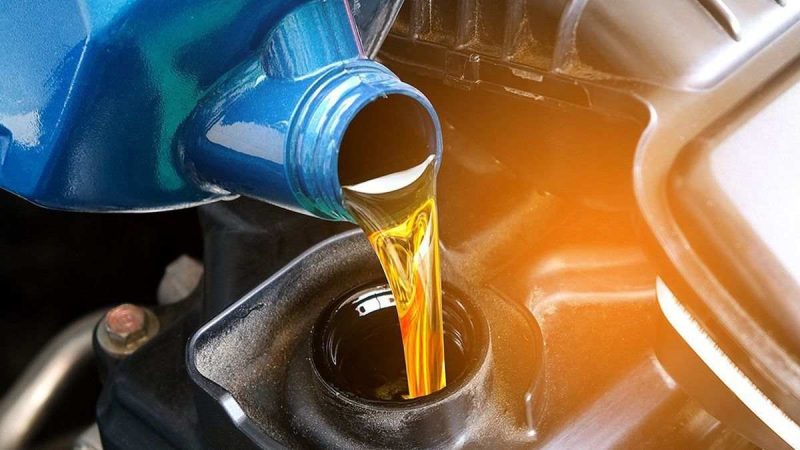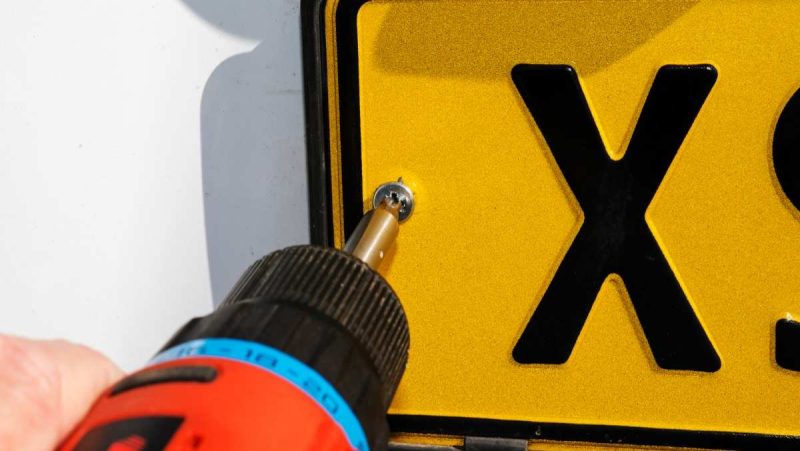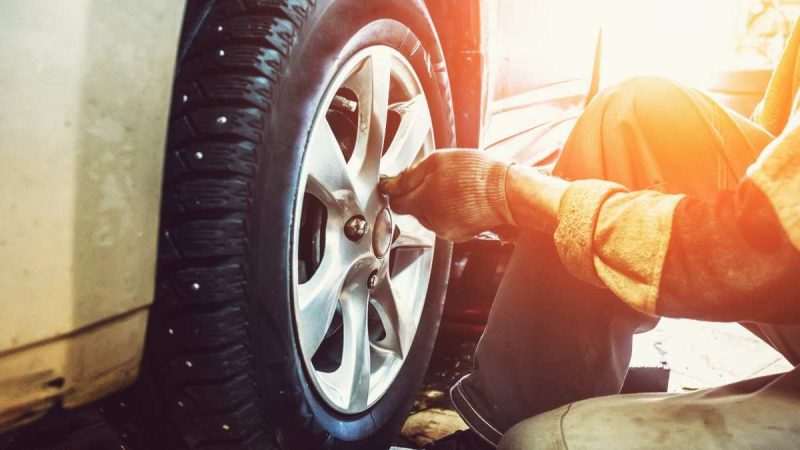Car Running Rich [Causes, Symptoms, How To Fix]

For a combustion engine to run smoothly, the air-fuel mixture has to be at a perfect 14.7:1 ratio. You get the car running rich issue when too much fuel and too little air enters the combustion chamber.
You’re here because you or someone you know still drives an internal combustion engine vehicle rather than an EV, and having recently learned the ideal air-fuel mixture an engine needs to operate optimally, you came here to learn even more.
Just what exactly does an engine running rich or lean mean, you must be wondering?
Well, this guide provides a clear description of the problem and highlights the notable causes, symptoms, and fixes.
Engine Running Rich Vs Lean – The Difference
All vehicles powered by a gas engine require a perfect ratio of air and fuel to run effectively. These ingredients are ignited by a spark in the combustion chamber to produce the power and propulsion your car or truck needs to move.
A problem arises when the balance between fuel and air consumption is disrupted.
When your car or truck is running rich, it means too much fuel and too little air is entering the engine. Not only does this result in a decline in engine performance, but the sediments produced from the burning of excess fuel will also clog and degrade your catalytic converter, leading to costly repairs.
A car that is running lean, on the other hand, has a problem with the engine receiving too much air. This also results in poor performance, particularly sluggish acceleration and even jerking.
Car Running Rich Symptoms
There are quite a number of symptoms associated with an engine that’s running rich. These symptoms can result from other issues with the engine, but taken as a whole, they are indicative of an engine that’s receiving too much fuel.
1. Check Engine Light
Since a car or truck running rich is an issue pertaining to the engine, the Check Engine Light turning on is often one of the first indications that something is wrong.
It could signal that the fuel-to-air ratio is out of whack, or something else. Regardless, DON’T EVER ignore it.
The engine is the most expensive part of any car, so any damage to it can lead to very costly repairs.
2. Pungent Exhaust Smell
When too much fuel enters the combustion chambers, an unusual amount of fuel will not be fully ignited in the combustion process.
The catalytic converter is designed to remove some of this unburnt fuel; however, much of it will simply pass through to the exhaust, resulting in a pungent rotten egg smell.
3. Poorer Fuel Economy
Naturally, you can expect your car or truck’s fuel economy to drop if an excess amount of fuel is being used.
Bear in mind, however, that vehicles typically use up more fuel during winter driving or when carrying heavy loads. Even so, if you notice that your fuel mileage is lower than normal under all conditions, you’re probably dealing with an engine that’s running rich.
4. Sluggish Engine
Seeing as your engine needs a perfect mixture of fuel and air to operate optimally, an imbalance will result in a drop in its performance.
You’d think an overflow of fuel into an engine would cause it to perform better, but that isn’t the case. Much of that excess fuel doesn’t get combusted and simply passes through the exhaust as waste.
5. High Carbon Monoxide Emissions
Your car’s exhaust is designed to expel a certain level of carbon monoxide, but if the engine is running too rich, this level will be higher than it can handle.
Vehicles commonly fail emissions tests because of a rich-running engine.
The expulsion of too much carbon monoxide poses a serious health risk, especially if some of it gets into the interior while driving and is inhaled.
6. Rough Engine Idle
A rich fuel mixture could also cause rough idling. You may notice that your car or truck feels rough or even vibrates when the engine is running.
The RPMs will behave erratically, and the vibration can be so bad that you feel it while driving.
7. Sooty Spark Plugs
The spark plugs in rich-running engines tend to accumulate an excessive amount of black deposits at their bottom, reducing their efficiency. If left untreated, this soot can find its way on other parts of the engine, causing even more damage.
Simply cleaning the plugs of the soot won’t address the underlying problem.
8. Black Exhaust Smoke
Just like how Mexican food causes some people to have diarrhea, an air-fuel mixture that’s running too rich will sometimes cause your engine to produce black exhaust smoke. Neither is pleasant.
If you’re concerned about your car’s unpleasant-looking emissions, then it’s about time you checked the air-fuel mixture.
Rich-Running Engine Causes And Fixes
A rich-running engine can be caused by many things; however, the biggest culprits are usually faulty engine-related sensors, as well as a defective fuel pressure regulator and fuel injector.
Keep reading for a quick overview of the most common causes.
1. Faulty MAF Sensor
A faulty mass air flow (MAF) sensor is possibly the most common cause of a car running rich.
As part of a vehicle’s electronic fuel injection system, the MAF is responsible for calculating the amount of air that enters the engine. If it’s dirty or faulty, it will miscalculate, causing too much or too little air to enter.
How To Fix
If you suspect your car or truck has a faulty mass air flow sensor, unless you’re comfortable using a scan tool, have a qualified mechanic perform a full diagnostic on it.
Cleaning the MAF is a bit more of a no-brainer, however. All you have to do is locate the sensor in your vehicle’s air box, which can usually be opened with a flathead screwdriver; remove it without touching the wires; clean it using rubbing alcohol or a specialized cleaner; and reinstall it.
2. Faulty O2 Sensor
A vehicle’s oxygen sensor is located on the exhaust pipe and measures the amount of unburnt oxygen in the exhaust gasses that leaves the engine, helping your engine determine the right air-to-fuel ratio to operate optimally.
For instance, if the sensor senses that too much air is exiting the engine, the engine control unit will cause more fuel to be added during the next combustion cycle to balance things out, and vice versa.
A faulty O2 sensor can signal the engine control module to add more or less fuel even if the air-fuel ratio is good, causing the engine to run too rich or lean.
How To Fix
It’s generally not recommended to clean a vehicle’s O2 sensors, nor is repairing them a good idea. A faulty unit will need to be replaced.
Fortunately, replacing a faulty O2 sensor is a simple procedure in most vehicles, though it requires using a special socket and jacking up the vehicle. If you’re not the do-it-yourselfer type, consider having an experienced mechanic handle the job.
3. Faulty MAP Sensor
The MAP sensor provides the engine’s electronic control unit (ECM) with instant manifold pressure information, which is used to calculate the optimal air density and air mass flow rate for combustion.
If the MAP sensor is dirty or faulty and, therefore, not working properly, the ECM won’t be able to accurately calculate engine load, causing the air-to-fuel ratio to become too rich or too lean.
How To Fix
Cleaning or replacing a MAP sensor is not complicated if you’re comfortable using a diagnostic tool and removing a car’s battery.
Cleaning is particularly easy since the sensor is located in an easy-to-access location in most vehicles, but repairing it can be challenging if you don’t have or know how to use a scan tool or lack experience with engine management systems and diagnosing electrical circuits.
In the latter case, letting a trained technician work on it will likely be cheaper, not to mention less of a hassle.
4. Faulty Engine Coolant Temperature Sensor
Engines require more fuel when cold and less fuel when fully warmed up. The coolant temperature sensor monitors the temperature of the engine’s coolant, letting the ECM know how hot or cold the engine is.
A bad coolant temperature sensor can, therefore, give the ECU the wrong signal, throwing off the fuel and timing calculations.
The engine will receive too much or too little fuel, making it run rich or lean.
How To Fix
Repairing or replacing a faulty engine coolant temperature sensor is something you can probably do yourself; however, you will need to jack the vehicle to access the sensor.
The tools required include a floor jack, jack stands, a coolant drip pan, a flat head screwdriver, pliers, a funnel, new coolant, a new coolant temperature sensor, and safety glasses and gloves.
This is a job you probably want a professional to handle.
5. Bad Intake Air Temperature Sensor
The primary purpose of the intake air temperature sensor is to detect the temperature of the air that enters the engine, an attribute the ECU uses to control the fuel-to-air ratio.
Warm air is less dense than cool air, necessitating less fuel for combustion. So if the IAT sensor detects that the air is warmer, the ECU will control for less fuel to enter the engine.
As you can imagine, an IAT sensor that goes bad can cause your engine to receive an improper amount of fuel, throwing the air-fuel ratio out of balance.
How To Fix
A faulty intake air temperature sensor will need to be replaced. The steps involve locating the sensor in your vehicle, disconnecting the negative battery cable, removing the sensor’s electrical connector and the sensor itself, and installing the new sensor.
Replacing an intake air temperature sensor is a fairly straightforward process that can be performed by most people using very few materials.
6. Faulty Fuel Pressure Regulator
In vehicles with an internal combustion engine, the fuel pressure regulator helps regulate and maintain fuel pressure. If the Electronic Fuel Injection System requires more pressure, the fuel pressure regulator will allow more fuel to enter the engine.
A failing or faulty fuel pressure regulator will cause fuel pressure to increase too high or drop too low, resulting in the engine receiving excessive or insufficient fuel.
How To Fix
The fuel pressure regulator is one of the more ubiquitous parts of a car and fairly inexpensive to fix.
You will need to replace it if it’s faulty or damaged, which can be done by yourself with just a few basic tools. The process takes as little as 30 minutes to complete, and, depending on the make and model of the vehicle, you may save $200 or more in repair costs if you decide to do it yourself.
7. Dirty Air Filter
The air filter in a car is responsible for preventing debris, dust, bugs, sand, and other sediments from entering the engine’s combustion chamber and causing all kinds of havoc.
A dirty or clogged air filter, therefore, makes it difficult, if not impossible, for clean air to get into the combustion chamber, throwing off the air-fuel balance.
How To Fix
The solution to this problem is simple and can be performed by yourself. Just locate the dirty air filters in your car, remove and clean each one, and re-install them.
If the air filters are damaged or too dirty to be cleaned, you should replace them with a new set. Otherwise, make sure to clean your air filters routinely to prevent the build-up of dirt, debris, and other substances.
8. Bad Fuel Injector
Contrary to what you might have thought, fuel injectors merely act as a spray nozzle for the fuel rather than actually control it. They operate like a faucet, opening and closing to allow fuel to be released into the engine’s intake manifold.
A fuel injector that’s stuck in an open position will let out too much fuel, causing the engine to run rich.
How To Fix
A faulty fuel injector can sometimes be repaired if the damage isn’t severe. For instance, it’s fairly inexpensive to have the injectors cleaned by a professional if they are dirty.
Clogged injectors can usually also be repaired, but only if the problem is caught quickly. However, a new injector is generally required if the nozzle, body, nozzle, or internal components are damaged.
Sometimes, only the O-rings need to be replaced, not the entire unit.
Rich-Running Car FAQs
Here are answers to other common questions about the engine running rich problem.
Can Running Rich Damage Engine?
Yes. An engine that’s running rich is bad because it causes poor performance, particularly less power, poor fuel efficiency, and high emissions.
Second, the burning of excess fuel builds up an abnormal amount of carbon deposits on the spark plugs, valves, and pistons and clogs the catalytic converter, reducing their effectiveness and causing undue stress on the engine.
It can damage the catalytic converter if left unchecked, resulting in costly repairs.
Is It Better To Run An Engine Lean Or Rich?
A gas engine should run at a fuel-to-air ratio of 14.7:1, which is considered ideal.
That said, having the engine run just a little lean could improve power and fuel economy, but it will overheat and fail if it runs too lean.
Running rich is never good as it reduces performance, wastes fuel, increases pollution, and makes key engine components work harder than they were designed to, among other issues.
What Should You Do If Your Car Is Running Rich?
If you think your car is running rich, have a full diagnostic performed to determine the underlying cause. This can be done either by yourself or a professional technician.
Common causes are a dirty air filter, faulty MAF or O2 sensor, bad fuel injector or intake Air temperature sensor, faulty fuel pressure regulator, and faulty MAP sensor.
Final Thoughts
Gas engines require just the right mixture of fuel and air to operate efficiently. When the mixture has too much fuel, the engine is said to be running rich. When there is too much air, it’s running lean.
We provided you with a comprehensive list of reasons why an engine might run rich, as well as signs that indicate it’s running rich. The best way to address this issue is to run a complete diagnostic on the engine to identify the underlying cause(s).
Some problems can be detected and fixed yourself, while others require the assistance of a professional. Ultimately, though, you want to avoid the issue altogether by having a preventive maintenance schedule and sticking to it so that your vehicle always runs optimally.
Now that you know what a car running rich means and what the causes, symptoms, and fixes are, you might also want to know what a tire pressure sensor fault is, the symptoms of metal shavings in oil, and what happens when you have a bad idle air control valve.







